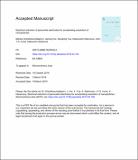Files in this item
Electrical reduction of perovskite electrodes for accelerating exsolution of nanoparticles
Item metadata
| dc.contributor.author | Chanthanumataporn, Merika | |
| dc.contributor.author | Hui, Jianing | |
| dc.contributor.author | Yue, Xiangling | |
| dc.contributor.author | Kakinuma, Katsuyoshi | |
| dc.contributor.author | Irvine, John T. S. | |
| dc.contributor.author | Hanamura, Katsunori | |
| dc.date.accessioned | 2020-03-21T00:33:37Z | |
| dc.date.available | 2020-03-21T00:33:37Z | |
| dc.date.issued | 2019-05-20 | |
| dc.identifier | 258296760 | |
| dc.identifier | 0cb81465-df93-4044-a1e0-84bf77525c68 | |
| dc.identifier | 85063579118 | |
| dc.identifier | 000464148700018 | |
| dc.identifier.citation | Chanthanumataporn , M , Hui , J , Yue , X , Kakinuma , K , Irvine , J T S & Hanamura , K 2019 , ' Electrical reduction of perovskite electrodes for accelerating exsolution of nanoparticles ' , Electrochimica Acta , vol. 306 , pp. 159-166 . https://doi.org/10.1016/j.electacta.2019.03.126 | en |
| dc.identifier.issn | 0013-4686 | |
| dc.identifier.other | RIS: urn:B965DB302AE1A055AB4852D4094DF755 | |
| dc.identifier.other | ORCID: /0000-0002-1986-9772/work/55901219 | |
| dc.identifier.other | ORCID: /0000-0002-8394-3359/work/68280572 | |
| dc.identifier.uri | https://hdl.handle.net/10023/19689 | |
| dc.description | This work was supported through the Leading Graduate School Program: Academy for Co-creative Education of Environment and Energy Science (ACEEES) funded by the Ministry of Education, Culture, Sports, Science and Technology (MEXT, Japan). | en |
| dc.description.abstract | Growth of finely dispersed nanocatalysts by exsolution of metal nanoparticles from perovskite oxides under reducing conditions at elevated temperature is a promising approach of producing highly active catalytic materials. An alternative method of exsolution using an applied potential has been recently shown to potentially accelerate the exsolution process of nanoparticles that can be achieved in minutes rather than the hours required in chemical reduction. In the present study, we investigate exsolution of nanoparticles from perovskite oxides of La0.43Ca0.37Ni0.06Ti0.94O3-γ (LCTNi) and La0.43Ca0.37Ni0.03Fe0.03Ti0.94O3-γ (LCTNi-Fe) under applied potentials in carbon dioxide atmosphere. The impedance spectra of single cells measured before and after electrochemical poling at varying voltages showed that the onset of exsolution process occurred at 2 V of potential reduction. An average particle size of the exsolved nanoparticles observed after testing using a scanning electron microscopy was about 30–100 nm. The cells with the reduced electrodes exhibited desirable electrochemical performances not only in pure carbon dioxide (current density of 0.37 A cm−2 for LCTNi and 0.48 A cm−2 for LCTNi-Fe at 1.5 V) but also in dry hydrogen (0.36 W cm−2 for LCTNi and 0.43 W cm−2 for LCTNi-Fe). | |
| dc.format.extent | 8 | |
| dc.format.extent | 1874143 | |
| dc.language.iso | eng | |
| dc.relation.ispartof | Electrochimica Acta | en |
| dc.subject | Perovskite | en |
| dc.subject | Exsolution | en |
| dc.subject | Potential reduction | en |
| dc.subject | CO electrolysis | en |
| dc.subject | Solid oxide cells | en |
| dc.subject | QD Chemistry | en |
| dc.subject | NDAS | en |
| dc.subject | BDC | en |
| dc.subject.lcc | QD | en |
| dc.title | Electrical reduction of perovskite electrodes for accelerating exsolution of nanoparticles | en |
| dc.type | Journal article | en |
| dc.contributor.institution | University of St Andrews. School of Chemistry | en |
| dc.contributor.institution | University of St Andrews. Centre for Designer Quantum Materials | en |
| dc.contributor.institution | University of St Andrews. EaSTCHEM | en |
| dc.identifier.doi | https://doi.org/10.1016/j.electacta.2019.03.126 | |
| dc.description.status | Peer reviewed | en |
| dc.date.embargoedUntil | 2020-03-21 |
This item appears in the following Collection(s)
Items in the St Andrews Research Repository are protected by copyright, with all rights reserved, unless otherwise indicated.

